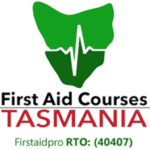Manufacturing is a high-risk industry that sees its fair share of acute and overuse injuries that requires urgent first aid intervention.
These injuries include lacerations, anaphylactic reactions, and even cardiac arrest. For this reason, it is important for everyone – from management down to workers – to be equipped with a range of first aid and lifesaving skills.
Manufacturing Safety
Approximately 900,000 Australians work directly in the manufacturing industry, according to the Australian Manufacturing Performance Report 0f 2022.
While the manufacturing sector is one of the most productive in the country, it is also one of the most dangerous industries when it comes to employment.
Manufacturing workers are at risk for many kinds of injuries, including:
- Musculoskeletal disorders (MSDs) due to repetitive physical stress at work
- Close contact with machinery and equipment
- Accidental slips, trips, and falls
- Exposure to hazardous, toxic substances
- Sudden explosions and structural fails
- Hearing and vision damage
Establishing zero injuries and ensuring workplace safety are some of the primary concerns of every manufacturing company and facility. Achieving these foals will help improve the whole operation’s performance and grow the business significantly.
However, one small mistake can cause business owners to lose precious time and money and put workers at serious risk of injuries and, worse, deaths.
With thousands of workplace-related injuries every year, improving health and safety procedures should be a priority.
6 Manufacturing Tips For Creating A Safer Work Environment
1. Manufacturing First Aid Kits
Manufacturing can be a high-risk industry, often requiring different workplace first-aid kits. Prepare the right supplies and maintain work, health, and healthy compliance by having the right kit.
2. Create A Checklist
Identify any environmental hazards and risks that can pose a danger to the employees. From there, prepare a checklist on how to handle these different kinds of hazards.
The most common manufacturing checklist includes, but is not limited to:
- Risk and safety assessment
- Incident report
- Safety inspection form
- Repair order ticket
- Quality assurance checklist
3. Embrace The Safety Culture
A safe workplace is not only about using the right equipment and procedures alone.
True safety in the industry is only achievable by an organisation that is focused on fostering a culture where everyone is responsible and empowered.
4. Wearing Safety Gears
Working in the dark, cluttered areas and operating with heavy objects and machinery can expose workers to a wide range of emergencies. On top of that is exposure to toxic materials, which can result in fires, explosions, accidents, and injuries.
For these reasons, wearing protective gear should be a no-brainer. It is an absolute must for all workers and is one of the key manufacturing safety tips.
Protective safety equipment includes gloves, safety glasses, masks, hard boots, and more.
5. Establish Open Communication
Having two-way communication between workers and the management help shape workplace safety and keep the necessary guidelines up to daily.
Regular safety meetings can influence and prepare everyone for safety matters by discussing the risks, what are the next steps, and coming up with new manufacturing tips.
6. First Aid Training
Many workers have lost their lives in emergencies because they did not receive urgent medical attention. Qualified first aiders know how to spot and provide treatment for various symptoms.
They are able to take swift and appropriate first aid actions to make sure the victim has the best chance of recovery possible. Early first aid interventions can stop minor accidents from becoming majors.
Get Trained
Reduce the incidence of manufacturing-related injuries and fatalities by knowing first aid.
Learn more about preventative interventions designed to meet your business needs, all in a first aid training course.
For more information and inquiries, reach out to us at 08 8382 4677 or email courses@firstaidpro.com.au.








